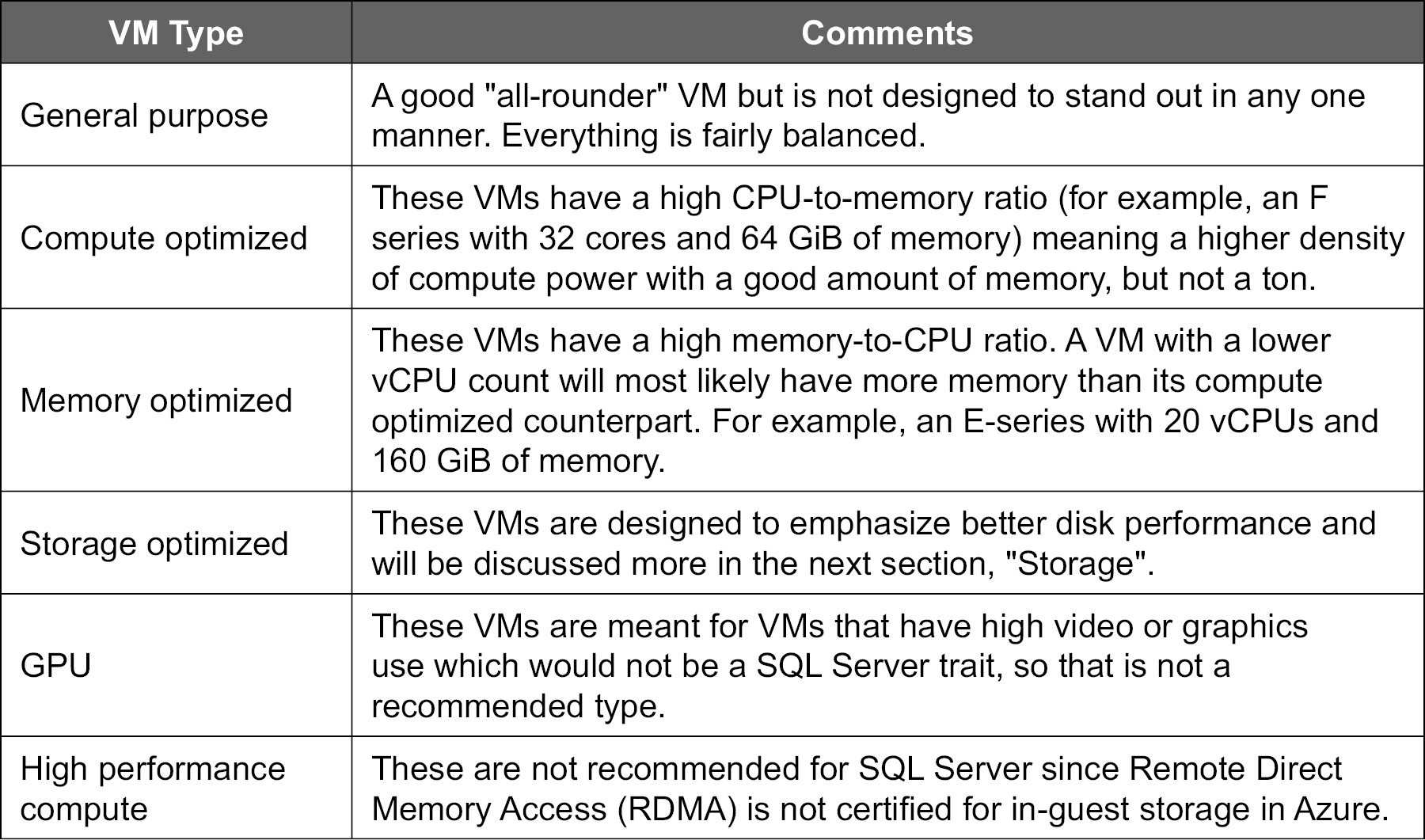Azure VM hardware options
VMs have a virtualized processor, memory, and storage. Processor and memory factor into the VM type and its choice of size. Storage is influenced by the VM type and size, but has its own parameters. This section will introduce the basics of VM types, sizes, and storage. Performance will be touched upon as this is a crucial element of configuring a VM and will be discussed further in Chapter 5, Performance.
VM types and sizes
This section will contain information about the different types and sizes of IaaS VMs available in Azure.
VM types and series
VMs in Azure come in different types and sizes. Within each major VM type, the size maps to what is known as a series, such as D, E, and G. Each series has different sizes with different specifications. The following table lists the different VM types and their purpose:

Figure 2.8: Different VM types with their recommended usage
VM resources can be reserved and guaranteed...



